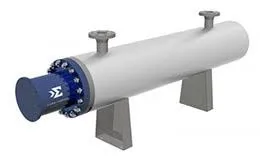steam boiler for paper mill factory
Steam Boiler for Paper Mill Factory An Essential Component
In the paper mill industry, the production of high-quality paper requires a substantial amount of energy, primarily in the form of steam. Steam boilers play a pivotal role in this process, providing the necessary heat and pressure needed for various stages of paper production. This article explores the importance of steam boilers in paper mills, their types, and the factors to consider for optimum performance.
The Importance of Steam Boilers in Paper Production
Paper manufacturing involves multiple processes, including pulping, refining, and drying. Each of these stages demands significant thermal energy, which is generated by steam boilers. These boilers convert water into steam by applying heat, usually derived from burning fuel such as natural gas, coal, or biomass. The steam produced is then utilized for heating, drying sheets of paper, and powering machinery.
One key advantage of using steam boilers in paper mills is their ability to provide consistent and high-pressure steam, ensuring efficient operation. Additionally, steam systems can be designed to integrate with other processes within the mill, enhancing overall energy efficiency and reducing operational costs.
Types of Steam Boilers
In the paper mill industry, various types of steam boilers are utilized based on specific operational needs and fuel sources. The most common types include
1. Fire-Tube Boilers These are the most traditional type of steam boiler, where hot gases pass through tubes surrounded by water. They are typically favored for their simplicity and lower initial costs, making them suitable for smaller mills.
2. Water-Tube Boilers In contrast to fire-tube boilers, water-tube boilers circulate water through tubes while hot gases surround them. This design allows for higher pressure and temperature operations, making them more efficient for large-scale paper manufacturing.
steam boiler for paper mill factory

3. Biomass Boilers Given the emphasis on sustainability, many paper mills are now opting for biomass boilers, which utilize organic materials as fuel. This not only reduces greenhouse gas emissions but can also lower fuel costs, aligning with industry trends towards eco-friendly practices.
Factors to Consider for Optimal Performance
To ensure that steam boilers operate efficiently in a paper mill, several factors should be considered
- Fuel Quality The type and quality of fuel used can significantly impact efficiency and emissions. Choosing the right fuel source, whether fossil fuels or biomass, is crucial.
- Maintenance Regular maintenance schedules can prevent breakdowns and prolong the lifespan of the boiler. This includes routine inspections, cleaning, and repairs.
- Heat Recovery Systems Integrating heat recovery systems can enhance energy efficiency by capturing waste heat and reusing it in the paper production process.
- Automation and Control Systems Advanced automation technologies can improve boiler operation, ensuring optimal pressure and temperature control while minimizing energy consumption.
Conclusion
In summary, steam boilers are indispensable for the successful operation of paper mills, providing the energy necessary for producing high-quality paper products. By understanding the types of boilers available and implementing best practices for maintenance and efficiency, paper manufacturers can optimize operations, reduce costs, and contribute to a more sustainable future. With continued advancements in boiler technology and fuel sources, the paper industry has the potential to further enhance its energy efficiency while meeting the growing global demand for paper products.
-
Top Electric Steam Boiler Manufacturers - High Efficiency SolutionsNewsJul.30,2025
-
Top Electric Steam Boiler Manufacturers – Efficient Industrial SolutionsNewsJul.29,2025
-
Top Electric Steam Boiler Manufacturers | Reliable Industrial SolutionsNewsJul.29,2025
-
OEM Steam Boiler Solutions for Custom Needs | High Efficiency & VersatilityNewsJul.29,2025
-
High-Efficiency Thermal Oil Boiler for Industrial Heating SolutionsNewsJul.29,2025
-
Top Electric Steam Boiler Manufacturers for Industrial EfficiencyNewsJul.28,2025

